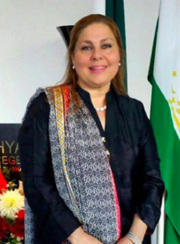Pakistan Administrative Service
The Pakistan Administrative Service, or PAS (previously known as the District Management Group or DMG before 1 June 2012) is the most elite and prestigious cadre of the Civil Service of Pakistan.[1][2] The Pakistan Administrative Service over the years has emerged as the most consolidated and developed civil institution, with the PAS officers of Grade 22 often seen as stronger than the federal government ministers. The service of PAS is very versatile in nature and officers are assigned to different departments all across Pakistan during the course of their careers. Almost all of the country's highest profile positions such as the federal secretaries, the provincial chief secretaries, and chairmen of top-heavy organisations like the National Highway Authority, Trading Corporation of Pakistan and State Life Insurance Corporation usually belong to the elite Pakistan Administrative Service.[3][4]
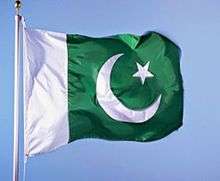
Currently Rabiya Javeri Agha serves as the first female president of the Pakistan Administrative Service.[5] Officers in this group are recruited through an extremely high competitive examination held once a year by the Federal Public Service Commission. Those selected for this group have to undergo a two-year training programme at the Civil Services Academy (CSA) in Lahore.[1][6]
History
The Indian Civil Service (ICS)—also known once as Imperial Civil Service in British India, predecessor of the Civil Service of Pakistan and District Management Group—was established by the British to bolster the British Raj. After Indian independence in 1947, the Indian Civil Service component ceded to Pakistan was initially renamed the Pakistan Administrative Service. Later, it was renamed the Civil Service of Pakistan. In 1954, an agreement was reached between the Governor General of Pakistan and the governors of the provinces to constitute an All-Pakistan service valid throughout Pakistan.[7]
Later under administrative reforms of 1973, the name of Civil Service of Pakistan was changed to All-Pakistan Unified Group (APUG), which consists of the Pakistan Administrative Service, Police Service of Pakistan and Secretariat Group. Since 1973, each year a new batch of officers undergo a "Common Training Programme" (CTP) which includes officers of various occupational groups at the Civil Services Academy.[8]
Presidents of the Pakistan Administrative Service (PAS)
The Pakistan Administrative Service Association is headed by a President who is assisted by a Senior Vice President, four provincial Vice Presidents (one each representing each of the four provinces), a Secretary General, a Treasurer and 11 members of the Central Executive Committee, duly elected by the PAS officers in an annual general meeting (AGM).
Since 1948, there have been 24 presidents of the PAS. Quite aptly, the position of the President of the Pakistan Administrative Service Association (erstwhile CSP Association) is considered to be a highly prestigious positions in Pakistan.
| President | Term of Appointment | Remarks |
|---|---|---|
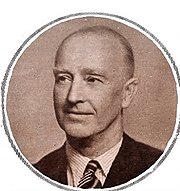 Mr. Ambrose Dundas |
1948-1950 | The first President of Pakistan Administrative Service Association. |
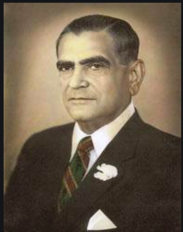 Mr. Akhter Husain |
1950-1954 | The second President, was a distinguished civil servant who remained Foreign
Secretary,Defense Secretary and later Governor West Pakistan. |
| Justice Mohd Shahabuddin | 1954-1955 | He was an illustrious civil servant who chose the judicial career and rose to
become the Chief Justice of Pakistan. |
| Mr. Mian Bashir Ahmad | 1955-1957 | Remained the Federal Secretary of Pakistan for 2 terms. |
| Mr Aziz Ahmad | 1957-1958 | He remained Pakistan's top diplomat as Foreign Secretary--- and after his
retirement from service-as Foreign Minister. |
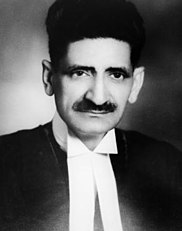 Justice Malik Rustam Kayani |
1958-1962 | Justice Kayani's judgments as the Chief Justice of West Pakistan High Court are still cited.
He authored many books, some of which are compendiums of his public addresses. |
| Mr. Qamar ul Islam | 1962-1966 | He remained Cabinet Secretary, then Pakistan's ambassador to Saudi Arabia, and lastly,
Pakistan's ambassador to the European Union in Brussels. |
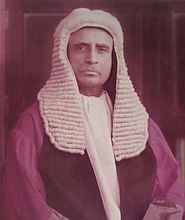 Justice Anwar ul Haq Shaikh |
1966-1970 | He served as Chief Justice of Pakistan. He was also Chairman of Anwar ul Haq Commission
on Civil Service Reforms. |
| Mr. Irfan Ahmad Imtiazi | 1970-1974 | He was the last President of the Association before its initial dissolution. He wrote a book on
“Public Administration in Pakistan” in 2008. |
| Mr. Safdar Kazmi | 1985-1988 | Former Federal Secretary, was the first President after restoration of the Association in the 1980's. |
| Mr. Pervez Ahmad Butt | 1988-1993 | Served as Federal Secretary (Science and Technology) as well as Chairman of COMSATS. |
| Mr Syed Naseer Ahmad | 1993-1996 | Served as Secretary Railways and Secretary Petroleum and Natural Resources, and was the
longest serving Home Secretary of Punjab. |
| Mr. Javed Akram | 1996-2001 | Served as Establishment Secretary, Member Federal Public Service Commission and the
Chief Census Commissioner of Pakistan. |
| Mr. Hafeez Akhtar Randhawa | 2001-2002 | Served as Additional Chief Secretary and Chief Secretary of Punjab and Chairman of the
Bank of Punjab. |
| Mr. Shakeel Durrani | 2002-2003 | He served as Chief Secretary of Khyber Pakhtunkhwa and Federal Secretary Railways/
Chairman Railway and Chairman WAPDA. |
| Mr. Hamayun Farshori | 2003-2005 | Served as the Chairman P&D Punjab and Federal Secretary for Commerce and Industries. |
| Mr. Abdul Rauf Chaudhry | 2006-2007 | Served as Federal Secretary of Housing and Works, Education Secretary and Cabinet Secretary. |
| Mr Ismail Qureshi | 2007-2009 | He was the 17th President of the Association. He has remained Establishment Secretary,
Secretary Water and Power, and prior to that, Provincial Health Secretary. |
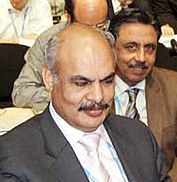 Mr. Mohammad Javed Malik |
2011-2013 | A BPS-22 Grade Officer, Mr. Javed was also the Kashmir Affairs and
Gilgit-Baltistan Division secretary, was transferred and posted as Disaster Management Division Secretary in 2011. |
| Mr. Agha Nadeem | 2013-2014
[Acting] |
BPS-22 Grade Officer & Acting President of PAS in 2013. |
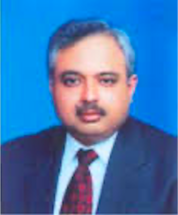 Mr. Seerat Asghar Jaura |
2014-2016 | A BPS-22 Grade Officer, Mr. Jaura served as the Federal Secretary,
Ministry of National Food Security & Research and as PAS President for a full 2-year term. |
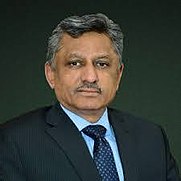 Mr. Mohammad Yunus |
|
A BPS-22 Grade Officer, Mr. Yunus served as Finance Secretary of Pakistan in 2019
and as PAS President for a full 2-year term. |
| PRESENT
2018 - 2020 |
The first female President of PAS, Rabiya Javeri Agha currently serves as Federal Secretary
at the Ministry of Human Rights. A BPS-22 Grade Officer, she is one of the senior most female officers in the country's Central Superior Services in the bureaucracy. |
Appointments of PAS Officers
After completing initial training and probation at the Civil Services Academy, officers are posted in field offices throughout Pakistan on Basic Pay Scale (BPS)-17 grade appointments. Officers of the rank of Captains (within 3 to 6 years' service) and equivalents from defense services are also inducted (in three occupational groups; P.A.S, Police and Foreign Services) on allocated quota after recommendations of Chairman Federal Public Service Commission.[8]
Officers of PAS are first appointed typically as Assistant Commissioners of sub-divisions. They will simultaneously be charged with the responsibilities of Assistant Commissioners of Sub-Divisional level.[8]
The Basic Pay Scales (BPS grades) are enumerated (in order of increasing responsibility) such as:
| Grade | Appointment | Remarks |
|---|---|---|
| BPS-17 |
|
Field appointment of AC combines roles of Sub-Divisional Magistrate (SDM) and Assistant Collector (Land Revenue) |
| BPS-18 |
|
Field appointment of DC combines roles of District Magistrate (DM) and Collector (Land Revenue) |
| BPS-19 |
|
|
| BPS-20 |
|
Divisional Commissioners were previously under Members of Board of Revenue but now they are directly responsible to the Chief Secretary of respective Province
Equivalent to Brigadier (1-star officer) of the Armed Forces |
| BPS-21 |
|
Equivalent to Major General (2-star officer) of the Armed Forces |
| BPS-22 |
|
Highest attainable rank for a serving officer
Equivalent to Lieutenant General (3-star officer) of the Armed Forces |
Post-devolution (2001) scenario
Magistracy continues to be exercised in the federal capital; however, the institution of the office of the Deputy Commissioner has been deprived of its previously held legal authority elsewhere in the country.
Notable PAS officers
- Ghulam Ishaq Khan
- Qudrat Ullah Shahab
- Roedad Khan
- Shehzad Arbab
- Nargis Sethi[8]
- Nasir Mahmood Khosa[1]
- Maroof Afzal
- Rizwan Ahmed
- Naveed Kamran Baloch
- Sardar Ahmad Nawaz Sukhera
- Azam Suleman Khan
- Kamran Rasool
- Kamran Lashari
- Mir Ahmed Bakhsh Lehri
- Raja Muhammad Abbas
- Shoaib Mir Memon
- Allah Bakhsh Malik
- Iqbal Hussain Durrani
- Babar Yaqoob Fateh Muhammad
- Syed Abu Ahmad Akif
- Jawad Rafique Malik
- Tariq Bajwa
- Fawad Hasan Fawad
- Sikandar Sultan Raja
- Shahjehan Syed Karim
- Tasneem Noorani
- Shahid Aziz Siddiqi
- Agha Jan Akhtar
- Orya Maqbool Jan
- Darbar Ali Shah
- Muhammad Hamza Shafqaat
- Muhammad Iqbal Memon
- Rabiya Javeri Agha
See also
- Federal Secretary
- Grade 22
- Chief Secretary (Pakistan)
- List of serving Generals of the Pakistan Army
- Law enforcement in Pakistan
- Appointment holder in government organizations of Pakistan
References
- "DMG renamed as PAS". The Nation (newspaper). 1 June 2012. Retrieved 29 June 2018.
- Malik Asad (25 May 2014). "Boon for PAS (Pakistan Administrative Service) angers other civil service groups". Dawn (newspaper). Retrieved 29 June 2018.
- Ali, Sameen (9 July 2018). "Is the bureaucracy politically neutral during elections?". Dawn.com.
- "Bureaucrats call for equal representation - The Express Tribune". Tribune.com.pk. 13 September 2018.
- "Archived copy". Archived from the original on 1 February 2019. Retrieved 1 February 2019.CS1 maint: archived copy as title (link)
- "Top 6 bureaucrats promoted to BS-22 | Top Story | thenews.com.pk | Pindi". thenews.com.pk. 20 November 2018. Retrieved 17 January 2020.
- Asad, Malik (25 May 2014). "Boon for PAS angers other civil service groups". Dawn.com.
- Imran Mukhtar (10 February 2013). "CSB (Central Selection Board) meets tomorrow to consider 300 babus' (bureaucrats) promotion". The Nation (newspaper). Retrieved 29 June 2018.
